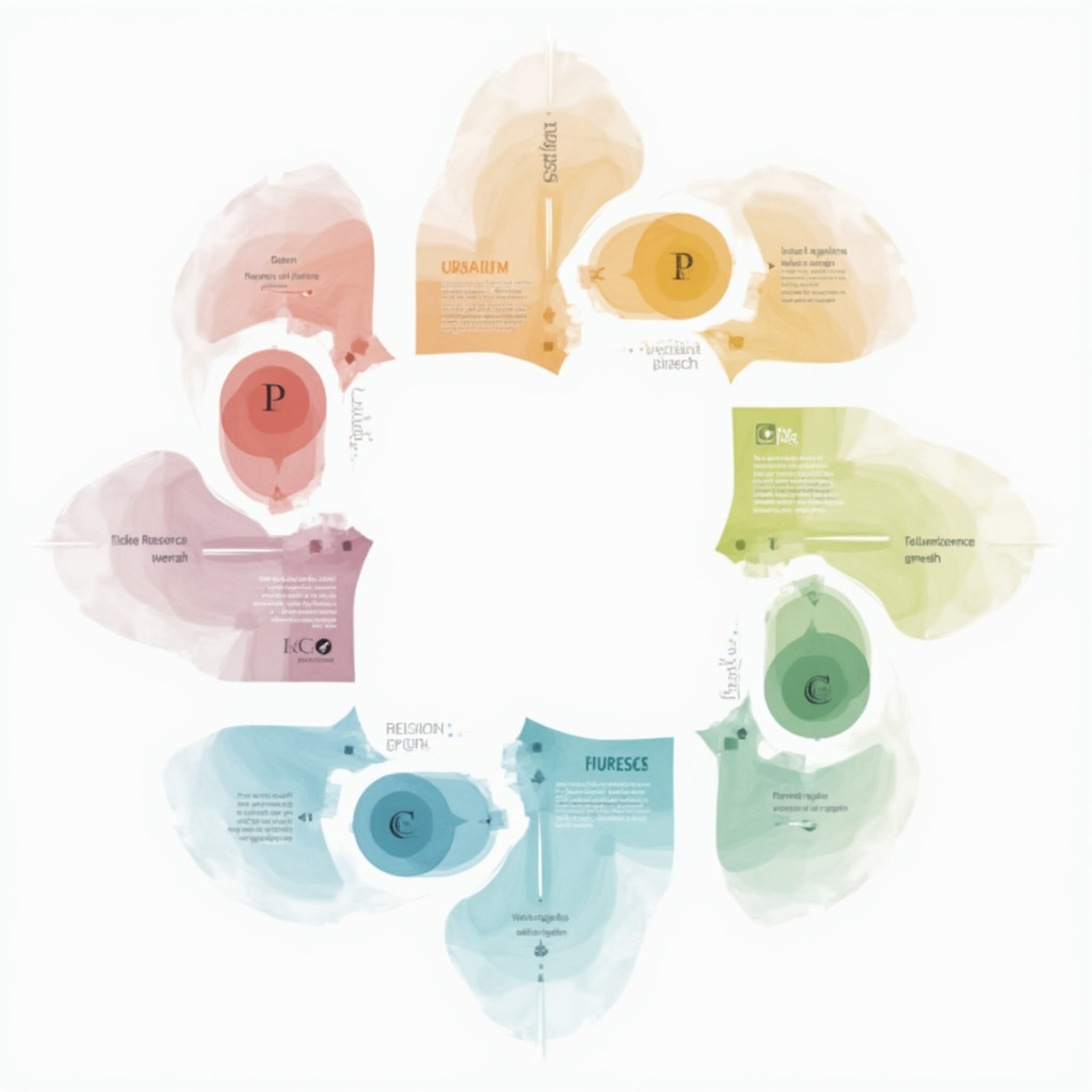Prompt design patterns

Prompt design patterns are structured frameworks for effectively communicating with AI systems. These reusable templates help break complex requests into manageable components, enhance security, and improve user experience when interacting with AI models like ChatGPT or DALL-E.
The Art of Speaking AI’s Language: Understanding Prompt Design Patterns
The first time I tried using ChatGPT was like attempting to order coffee in a foreign country where I kinda-sorta knew three words of the language. I typed something like “give me marketing ideas” and got back the AI equivalent of a polite shrug. It wasn’t until I discovered prompt design patterns that I realized I’d been essentially asking an Italian chef to “make food” instead of requesting “a traditional carbonara with pancetta, not bacon, and extra pecorino.”
We’ve all been there – staring at that blinking cursor, wondering why our AI assistant keeps misunderstanding what seems like a perfectly reasonable request. Turns out, we’ve been missing teh instruction manual all along. Let’s break it down…
What Are Prompt Design Patterns, Actually?
Prompt design patterns are systematic strategies for structuring your conversations with AI systems. Think of them as conversational recipes that help you get consistent, high-quality results when interacting with tools like ChatGPT, DALL-E, or other AI models.
Just as software engineers use design patterns to solve common programming problems, prompt engineers use these patterns to overcome communication challenges with AI. They’re basically the difference between asking someone to “draw a picture” versus giving them a detailed creative brief.
Core Elements of Prompt Design Patterns
- Structure: Organized frameworks that break down complex requests
- Reusability: Templates you can adapt for similar situations
- Purpose-driven: Each pattern solves specific interaction problems
- Optimized: Refined through testing to maximize effectiveness
Learn more in
Prompt engineering guide
.
Why Prompt Design Patterns Matter (Even If You’re Not a Tech Person)
Imagine having a brilliant personal assistant who’s incredibly knowledgeable but extremely literal. Without clear instructions, they might bring you exactly what you asked for—not what you actually needed. That’s your AI without good prompting.
The right prompt patterns can transform your AI interactions from frustrating to fantastic. They help bridge what experts call the “AI articulation barrier”—that gap between what you want and what you’re actually asking for.
Benefits of Using Prompt Design Patterns
- Save time: Get useful answers faster without endless back-and-forth
- Improve results: Receive more relevant, accurate, and detailed responses
- Enhance security: Protect against prompt injection and other vulnerabilities
- Consistency: Create predictable, reliable outputs for repeated tasks
How Prompt Design Patterns Work (For Regular Humans)
Let’s get practical. Prompt design patterns aren’t some mysterious advanced technique—they’re simply smart ways to structure your requests. Here’s how they work in everyday situations:
Task Decomposition Pattern
Rather than asking the AI to solve a complex problem all at once, you break it down into smaller steps. It’s like the difference between saying “Plan my entire vacation” versus “First, recommend three destinations based on my budget and interests. Then, for each destination, suggest accommodation options.”
Security-Focused Patterns
These patterns help protect against prompt injection (where bad actors try to manipulate AI by sneaking instructions into inputs). For example, the “Constrained Execution Pattern” explicitly limits what actions the AI can take with untrusted input.
UX-Oriented Patterns
These focus on improving the user experience. Patterns like “Style Galleries” and “Prompt Rewrite” help users better articulate what they want without needing to become prompt engineering experts themselves.
Style and Output Formatting Patterns
Want your responses in a specific format? These patterns help structure the AI’s output, like requesting information in bullet points, tables, or specific writing styles.
Common Myths About Prompt Design Patterns
Let’s bust some myths before they mess with your AI game:
- Myth #1: You need to be technical to use them – Nope! Many patterns are intuitive and based on clear communication principles anyone can learn.
- Myth #2: They’re just for developers – Actually, prompt patterns help everyone from writers to marketers to students get better results.
- Myth #3: More words always equals better prompts – Sometimes brevity wins. The right pattern might be concise but perfectly structured.
- Myth #4: AI understands context like humans do – Even with patterns, AI still lacks true understanding. Patterns help compensate for this limitation.
Real-World Examples of Prompt Design Patterns in Action
Let’s see these patterns with their sleeves rolled up, doing actual work:
The Chain-of-Thought Pattern
Bad prompt: “What’s the best investment strategy for me?”
Better prompt using the pattern: “I need investment advice. First, analyze the pros and cons of stocks vs. real estate for someone in their 30s with moderate risk tolerance. Then, recommend a specific allocation strategy with percentages. Finally, suggest three specific next steps I should take.”
The Persona Pattern
Bad prompt: “Write me marketing copy.”
Better prompt using the pattern: “Act as an experienced copywriter who specializes in direct response marketing for fitness products. Write email subject lines that would appeal to busy professionals looking to get fit without spending hours at the gym.”
The Constraint Pattern
Bad prompt: “Design a logo for my business.”
Better prompt using the pattern: “I need a minimalist logo concept for my sustainable fashion brand ‘Evergreen.’ Use only two colors (forest green and white), avoid complex shapes, and ensure it works well in small sizes for mobile applications.”
See how each pattern creates structure that guides the AI toward more useful outputs? That’s the magic of prompt design patterns at work!
Learn more in
Prompt engineering guide
.
What’s Next? Taking Your AI Conversations to the Next Level
Now that you understand the basics of prompt design patterns, you’re ready to level up your AI interactions. Start by identifying your most common AI tasks and experimenting with different patterns to see which work best.
Remember, becoming fluent in “AI-speak” is a journey. Just like learning any language, you’ll get better with practice. Soon you’ll be having those satisfying AI conversations where you think, “Wow, it actually understood exactly what I wanted!”
The field of prompt engineering is evolving rapidly, with new patterns emerging as AI capabilities expand. The patterns that work today might evolve tomorrow—but the fundamental principles of clear communication will always remain valuable.












